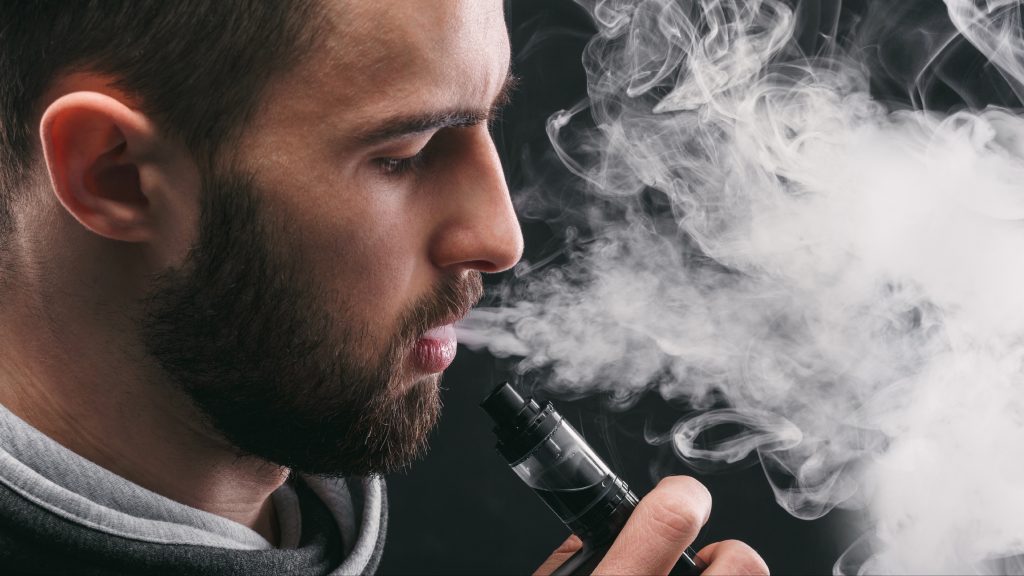-
Featured News
Vaping unknowns: Mayo Clinic expert answers questions about vaping

The use of electronic-cigarettes, or vaping devices, has been linked to one death and an outbreak of related lung injuries.
"The Center for Diseases Control and Prevention does not know the cause, nor do I," says Dr. J. Taylor Hays, director of the Mayo Clinic Nicotine Dependence Center. "The link that's common to the cases appears to be that they were all using electronic cigarettes of some sort, not necessarily the same device or the same e-juice, the liquid that is aerosolized by the devices. There have been some reports that they used something other than nicotine-containing solutions, some may be a marijuana like solution. But it's unknown, and I think that's what has people frightened."
Watch: Dr. J. Taylor Hays discusses vaping.
Journalists: Broadcast-quality sound bites with Dr. Hays are in the downloads. Please "Courtesy: Mayo Clinic News Network."
Dr. Hays says recent cases of lung injuries may be the tip of the iceberg. He answered questions about how vaping works:
Are all electronic cigarettes the same?
"E-cigarettes are now into third or fourth generation devices since they became available widely, roughly 2011-12. The common delivery method is heating a liquid to create an aerosol. We call it vapor, but it’s an aerosol of fine particles that are suspended, and that aerosol is then inhaled into the lungs."
What do the solutions contain?
"The solutions that are heated by these devices contain nicotine. They also contain a vehicle, typically vegetable glycerin or propylene glycol. And these are common vehicles for ingested substances, medications and other over-the-counter products. And they are what the Food and Drug Administration deems as generally recognized as safe, oe GRAS generally recognized as safe for oral ingestion — not for heating and inhaling. Those vehicles are in virtually all of the solutions."
What is being inhaled?
"The key thing for people to know is vaping is not water vapor. It is a complex solution of chemicals that have been changed from their original state because they’ve been heated to high temperatures. And although these components are considered safe for ingestion, the flavorings like cinnamon, the vehicles like vegetable glycerin, they are not safe for heating and inhaling because the chemical constituents have changed."
"Many of the chemicals now that can be inhaled are different aldehydes and other chemicals that are derivative from these original ones, and we think those are likely harmful. We know some of them are potentially cancer-causing and, of course, there's been no link with e-cigarettes and cancer and, until recently, no link between e-cigarettes and lung disease. But now people are questioning that."
What is your advice to parents?
"Your children probably don't want you to know that they are using. So you should ask them. Have those open conversations about what they're doing, and know that vaping devices are not safe. I want to qualify that and say they are probably not safe, although these recent cases are making us question this. They're probably safer than cigarettes for sure, but they are not safe. They are not water vapor, as some of the children have been led to believe by their peers and by some of the advertisements actually. They are not safe. You should know what your children and students are doing, and advise them never to use these devices. Never inhale anything in your lungs except air."
Related posts:
- Mayo Clinic Minute: Rise in teen tobacco use linked to vaping
- Mayo Clinic Minute: Is vaping a gateway to smoking?
- Mayo Clinic Minute: Quit smoking and add years to your life







